"Is the bagpipe played somewhere in Dalarna? And how is it tuned?"
Swedish author August Strindberg in a letter to painter Carl Larsson 1906.
"That horrible instrument is no longer played in Dalarna."
Carl Larsson's answer.
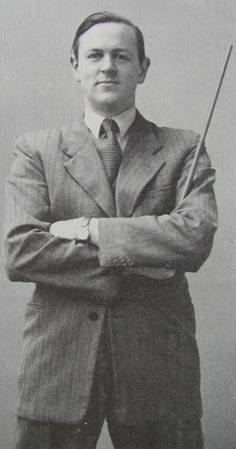
Mats Rehnberg
In 1943 The Nordic museum in Stockholm published a dissertation, "Säckpipan i Sverige" (The Bagpipe in Sweden), by the ethnologist Mats Rehnberg (1915-1984). Rehnberg had found the first hints about a Swedish bagpipe tradition in 1937, through a word in a local dialect in Dalarna[1]. Then, during an evacuation of the Nordic museum's dusty collections in 1939, some strange (and very dry) bagpipes fell out from a box ...
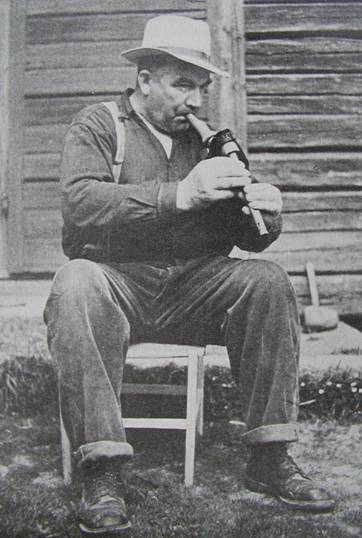
Gudmunds Nils Larsson (1892-1949)
Rehnberg made a scoop. It was an established 'fact' at the time that there had never been a bagpipe tradition in Sweden, at least not since mediaeval times - an interesting claim considering that the instrument was mentioned as a national instrument only a few decades before (see quote on the introduction page).
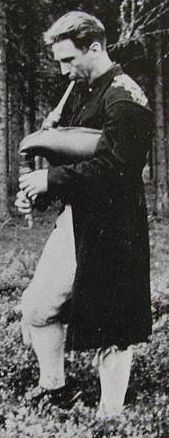
Ture Gudmundsson
Rehnberg visited and interviewed the last known bagpiper, Gudmunds Nils Larsson, several times during his work. So did the music teacher Ture Gudmundsson (1908-1979), who had been inspired by Rehnberg's dissertation to build a bagpipe, but soon found that he needed more technical information. After his visit to Gudmunds Nils Larsson, Gudmundsson managed to make a playable instrument[2] on which he played and recorded two tunes for the Swedish Radio in 1948. For 35 years, this was the only recording of Swedish bagpipes.
|
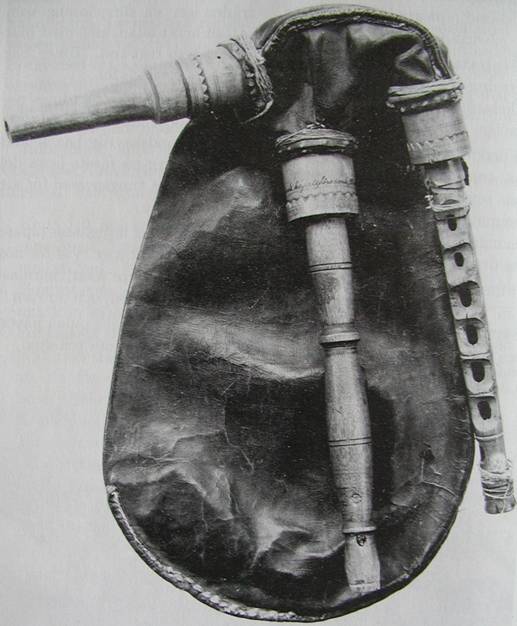
19th century bagpipe
A handful of instruments were built in the 50's, 60's and 70's, but it was not until 1981, when Gunnar Ternhag at Dalarna's museum asked Leif Eriksson (a saw-mill worker and cabinet-maker) and Per Gudmundson (a fiddler) to develop a reliable instrument and Eriksson started to produce them in larger quantities that the revival really started. The revived instrument was a compromise between the the few (about a dozen) preserved bagpipes in Swedish museums, and the need for a bagpipe that goes well together with other instruments.

Bagpipe by Leif Eriksson
The latter need affected the choice of key and scale for the chanter - a choice that had to be made anyway, since nobody knew for sure how the old instruments were tuned. It also caused two deviations from the tradition. First, none of the preserved instruments had a tunable drone, while Eriksson equipped his drone with a tuning-slide. Second, after having made only a few instruments, Eriksson chose to turn the bag inside-out (the hair side of the hide inside the bag) to make it easier to make air-tight.
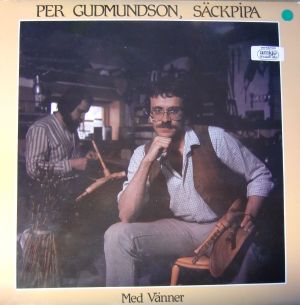
Gudmundsons's LP
One of the first things to do after having revived the instrument, was to make it known. Per Gudmundson was, and still is, best known as a fiddler. That one of Sweden's greatest fiddlers sometimes put his fiddle away and played a tune or two on the Swedish bagpipes certainly helped spreading the news. Gudmundson also made an LP album, simply called "Säckpipa" (the Swedish word for bagpipe). A TV program about the revival was made, bagpipe courses and festivals were held regularly in Dalarna throughout the 80's, and other instrument makers started to make Swedish bagpipes - Alban Faust, Börs Anders Öhman and Bengt Sundberg being the most well known makers after Eriksson.
|




